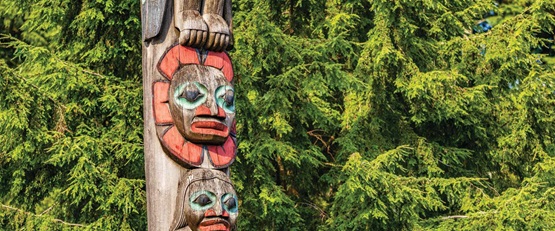

Alaska's Inside Passage
Cruising Alaska’s Inside Passage is a voyage of discovery, leading to where both cultural gems and natural wonders get the chance to shine. Lucy Jones sails north.
Less than 100,000 people live along Alaska’s Inside Passage, sprinkled between tiny fishing villages and historic gold rush towns that are inherently tied to the ocean. Many are secluded from the outside world, only accessible by water and that’s the way the locals like it. A cruise along the Inside Passage is an insight into these fascinating communities, and the best way to see some of the most spectacular landscapes on the planet soaring ice cliffs, ancient glaciers and unspoilt forests.
Ketchikan
Known as Alaska’s “first city”, Ketchikan is the first port of call (literally) for cruisers sailing up the Inside Passage. The town is built along a narrow strip of coast in front of a steep hillside and sections of it actually perch above the water on wooden stilts, connected by raised boardwalks.Juneau
Two prospectors discovered gold here in 1880 and, within a few years, the town became home to the three largest gold mines in the world. Today, Juneau (as it was later named) is an exercise in contrasts -it’s the state capital, yet no roads lead there.Skagway
Another gold rush town, Skagway was the gateway to the famed Klondike fields -some 30,000 eager prospectors passed through this remote outpost at the end of the 1890s. Skagway was rough and ready (and often downright dangerous), brimming with hastily erected brothels and saloons.Denali National Park
Away from the crystalline waters of the Inside Passage is Denali National Park - Alaska at its most raw and untamed. Sitting in the shadow of the great Denali peak (formerly known as Mount McKinley), the highest on the North American continent, it is an ever-changing panorama of dramatic glacier fields, icy rivers and thick forest.Start Planning

Passage Through the Rockies and Alaska Cruise
Calgary to Vancouver

Highlights of Eastern and Western Canada with Alaska Cruise
Toronto to Vancouver

East Coast Highlights and Alaskan Adventure
Toronto to Fairbanks

Passage Through the Rockies and Alaska Cruise
Calgary to Vancouver

Highlights of Eastern and Western Canada with Alaska Cruise
Toronto to Vancouver

East Coast Highlights and Alaskan Adventure
Toronto to Fairbanks






